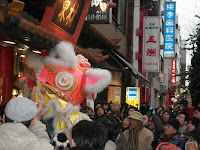



Small rural town activates itself with Hina Matsuri doll festival
The 300-year-old former village headman’s residence becomes the theater of a traditional “Hina Matsuri” festival from February to March with hundreds of special dolls displayed to the public. The doll festival, organized by Kaisei Town with a population of 16,000, attracts about 20,000 visitors to the dominantly farming region every year. During the three-week festival, members of the local women’s club are busy cleaning the residence and preparing special dolls and other items to be displayed before receiving visitors.
The oldest of the special dolls are those preserved by the Seto family, the former owner of the straw-roofed residence, whose origin goes back to the 17th century early in the Edo era. Other dolls, made in the Meiji era or later periods, have been contributed by other families of the town. They are displayed along with many colorful hanging decorations of lucky items, which are handmade by members of the women’s club. “We have about 20 sets of special dolls contributed and over 7,000 items of hanging decorations,” a women’s club member said. “There are also some dolls in the warehouse, because we cannot display all of them right here.”
The special dolls for the Hina Matsuri festival include a pair of dolls representing the Emperor and the Empress, which is placed atop of five- or seven-tier alters covered with red carpet. Placed beneath them are the three court ladies, the five court musicians and the ministers of the left and the right. Also on display are miniature pieces of furniture, including “bonbori” paper-covered lanterns, and fake foods like lozenge-shaped colored rice cakes.
Let’s light up the “bonbori” lanterns,
let’s offer peach flowers at the alter,
flutes and drums played by the five musicians.
Let’s have fun with the Hina Matsuri dolls today.
The Emperor and Empress dolls,
sitting side by side with straight faces,
the white faced court lady is
just like my married elder sister.
The spring breeze gently sways the flickering light
on the golden folding screen.
The Minister of the Right has a red face.
He must be drunk with rice malt sake.
Changing clothes and tying obi sashes,
today, I will also be dressed in all my finery,
for this special day of March,
for the Hina Matsuri festival, lovelier than anything else.
(A personal translation)
This is a children’s song which is frequently heard toward early March. The song, made in the 1930s, is in a minor key but it has been loved for its gentle melody not only by children but also by many women.
The Hina Matsuri festival is usually observed on the third day of March. The fest is based on a practice which dates back to the Heian period of the 10th to 12th centuries, in which people transferred their sin and misfortune to small paper dolls and floated them down the river. Combined with a doll play among girls at noble families, the practice developed into a festival in later periods to wish for young girls’ good health and happiness. The event is also called the Feast of Peach Blossoms, because it comes when peach blossoms start to bloom.
The Hina Matsuri doll display at Kaisei Town is one of many newly launched events in various parts of Japan in order to demonstrate each region’s attractive features in historical and traditional terms. The town can be reached by about an hour of train ride from Tokyo.
The doll festival at the Seto family residence began only five years ago. But enthusiasm among local people, particularly members of the women’s club, about displaying their life and culture through the event suggests that the fest will continue to attract far more people than the town's population in the years ahead. The special dolls will be displayed until March 7 this year.







